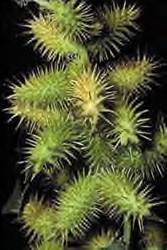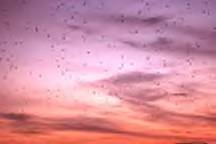Hope is the Thing with Feathers
One of the first things that struck me after I settled in China was a lack of things in the air. No airplanes. No birds. The lack of birds was especially disturbing. I asked my students. They all knew the story. In the fifties, in China, Mao "urged" the peasants to get rid of birds. Birds ate grain. So the country as a whole was mobilized. That day, all able bodied Chinese went outside with noisemakers, dishtowels and the like. The purpose was to keep the birds from lighting and resting anywhere. The birds, shooed from one perch to another hour after hour died of heart attacks. Sorrowfully, after the birds were virtually gone, the peasants became aware that the birds likely ate more insects than grain. But twenty years later the wild bird population had not recovered, though I was occasionally offered sparrow for dinner. Admit I passed.
In this country, our war on wild birds has been slightly more selective. We were for the most part simply wanton. Too many passenger pigeons? Shoot 'em. But real war was made on the Carolina Parakeet. The only native North American parrot. The last one died in a zoo in Cincinnati in 1918. His name was Incas. Yes, They ate seeds. Their favorite seed was the cocklebur. Evidently the only bird which did. Every year as I pulled the burrs from my horses manes and tails, I cursed those farmers. (Sorry Phil.)
Every year as I pulled the burrs from my horses manes and tails, I cursed those farmers. (Sorry Phil.)
 Every year as I pulled the burrs from my horses manes and tails, I cursed those farmers. (Sorry Phil.)
Every year as I pulled the burrs from my horses manes and tails, I cursed those farmers. (Sorry Phil.) While we lived in China, most nights, at twilight, we'd go out to my the end of my stone terrace, and rest our arms of the rail, and wait. 
Soon, huge whirls of bats would emerge from their sleeping places in Victoria Park, and rise, and swoop and disperse. Gorgeous and brief, that was pretty much it for things in the air. . . .

Soon, huge whirls of bats would emerge from their sleeping places in Victoria Park, and rise, and swoop and disperse. Gorgeous and brief, that was pretty much it for things in the air. . . .













3 comments:
I love birds. Would miss them like crazy. Recently read that the chickadees, which come to our feeder, "talk" to each other. The number of the "dees" in their call indicates whether there is a predator. Whether it is a land predator, or an air predator and where it is. And whether the predator is approaching, fast or slow, or leaving. There can be as many as 28 "dees" in a single call.
All the others (than us) are amazing if we stop and study them. Too bad we do that so seldom.
BTW, did you know that after years and years of "Robins mate for life," that (I think it was) sixty percent of the offspring in a Robin's nest are NOT the offspring of the partner, lol?!!
But perhaps what you don't know won't hurt you. . . .
If you're a Robin. . . .
Post a Comment